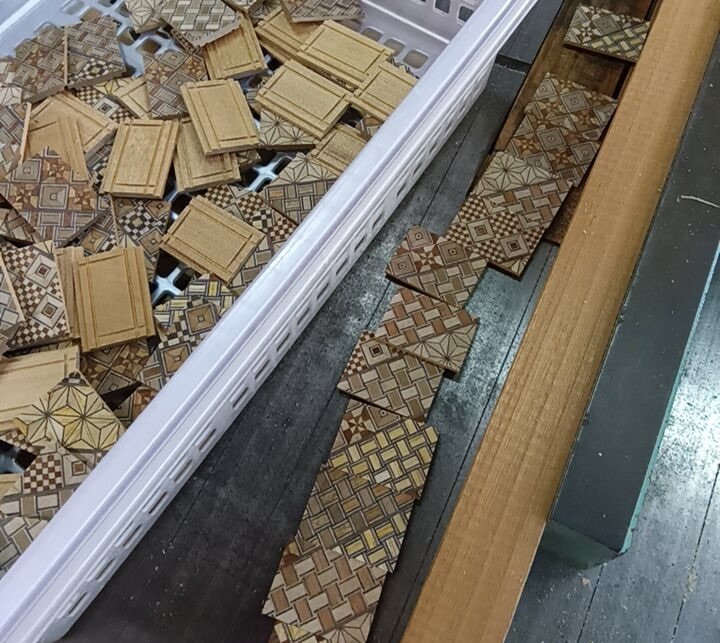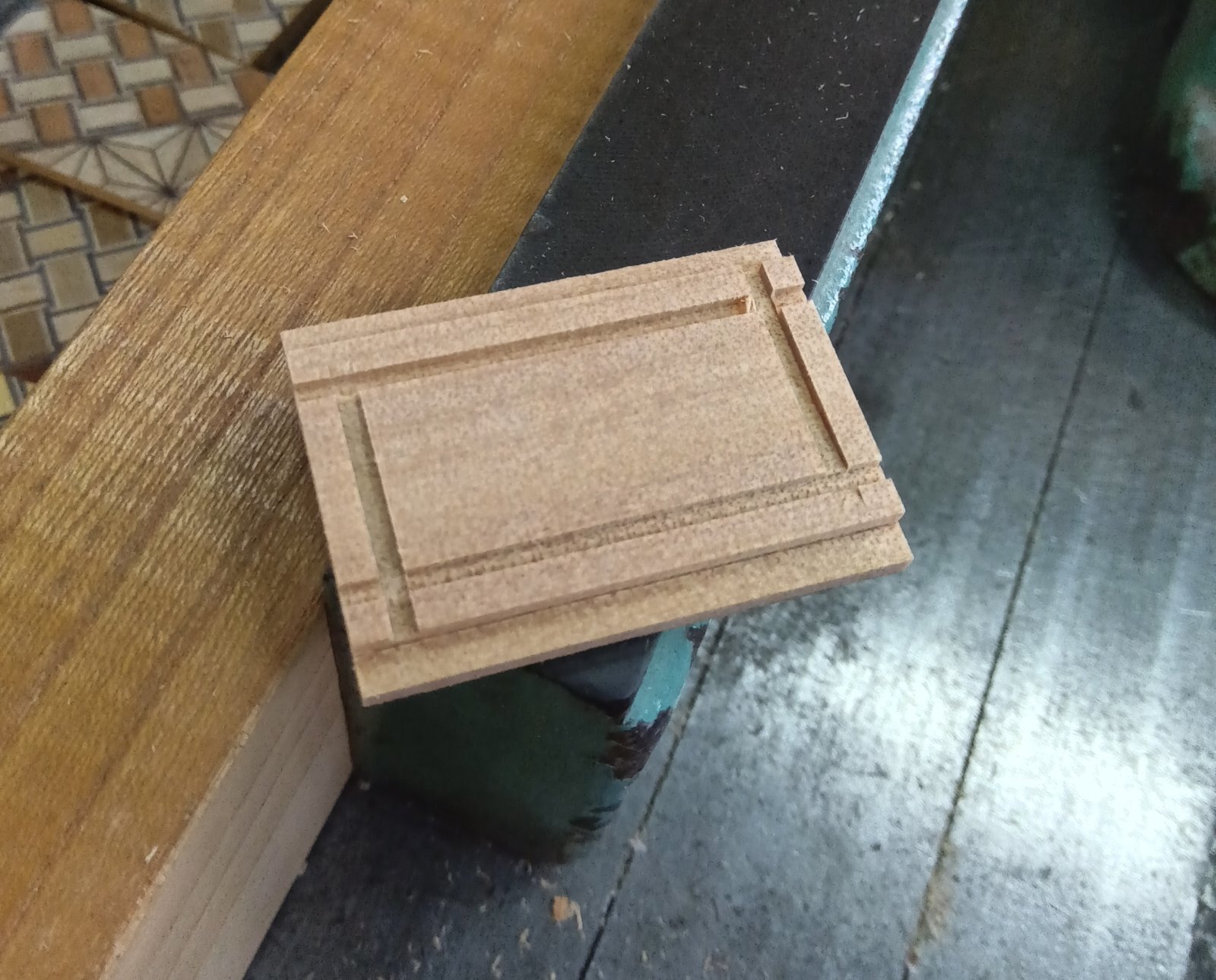The frame of mame box
The weather is bad today for the first time in a while, and the humidity is a bit high, but I plan to lower the humidity in the room using the air conditioner and proceed with attaching the "Kannuki (slide keys)" panel on the 5-sun 27-step Japanese puzzle box.
Yesterday, as shown in the picture, I made the frame panel for the Mame 10-step puzzle box. If you look closely, you can see that this frame panel combines both the internal structural panel and the external yosegi panel into one. I processed a step into a single board, making it appear as two separate pieces. This differs from the usual way of making puzzle boxes, but I’ve been using this method for the mame puzzle box for over 10 years. Initially, like other puzzle boxes, I would first create the structural part and then attach the external yosegi panel. However, since the mame puzzle box is so small, achieving the required 'precision' was quite difficult.
So I came up with the idea of creating an integrated outer panel from the beginning. Nowadays, some craftsmen use this method for 2-sun and 3-sun boxes (probably because they saw my puzzle boxes... 😅), but this technique didn’t exist in the history of Japanese puzzle boxes before. I briefly used this method for my other puzzle boxes, such as 3-sun and 4-sun boxes, but I realized that as the size of the box increases, this method tends to make the craftsmanship sloppy. So, I stopped using this method for anything other than the mame puzzle box and returned to the traditional way of making them. However, some other craftsmen still use this method because, although the workmanship may be rough, it allows for faster production.
and also, This mame puzzle box uses a traditional technique that was commonly employed in older Japanese puzzle boxes. The technique is to 'only make the aruki(moving panels) groove partway.' As seen in the picture, the "groove" on the side of this mame puzzle box is only processed halfway. This causes the 'aruki panel,' which slides along the groove, to stop there. In other words, the mechanism stops at that point, preventing the panel from falling out. This method was frequently used by craftsmen in the past, for example, in the side aruki before a drawer would appear in secret boxes with drawers.
Determining the stopping position and the depth of the groove is very challenging because it can’t be expressed in precise measurements; it’s always decided by intuition and experience. The movement of the aruki can change entirely depending on the depth of the groove and where it stops. In this way, the creation of puzzle boxes involves many parts that rely on intuition rather than precise measurements.
Yesterday, as shown in the picture, I made the frame panel for the Mame 10-step puzzle box. If you look closely, you can see that this frame panel combines both the internal structural panel and the external yosegi panel into one. I processed a step into a single board, making it appear as two separate pieces. This differs from the usual way of making puzzle boxes, but I’ve been using this method for the mame puzzle box for over 10 years. Initially, like other puzzle boxes, I would first create the structural part and then attach the external yosegi panel. However, since the mame puzzle box is so small, achieving the required 'precision' was quite difficult.
So I came up with the idea of creating an integrated outer panel from the beginning. Nowadays, some craftsmen use this method for 2-sun and 3-sun boxes (probably because they saw my puzzle boxes... 😅), but this technique didn’t exist in the history of Japanese puzzle boxes before. I briefly used this method for my other puzzle boxes, such as 3-sun and 4-sun boxes, but I realized that as the size of the box increases, this method tends to make the craftsmanship sloppy. So, I stopped using this method for anything other than the mame puzzle box and returned to the traditional way of making them. However, some other craftsmen still use this method because, although the workmanship may be rough, it allows for faster production.
and also, This mame puzzle box uses a traditional technique that was commonly employed in older Japanese puzzle boxes. The technique is to 'only make the aruki(moving panels) groove partway.' As seen in the picture, the "groove" on the side of this mame puzzle box is only processed halfway. This causes the 'aruki panel,' which slides along the groove, to stop there. In other words, the mechanism stops at that point, preventing the panel from falling out. This method was frequently used by craftsmen in the past, for example, in the side aruki before a drawer would appear in secret boxes with drawers.
Determining the stopping position and the depth of the groove is very challenging because it can’t be expressed in precise measurements; it’s always decided by intuition and experience. The movement of the aruki can change entirely depending on the depth of the groove and where it stops. In this way, the creation of puzzle boxes involves many parts that rely on intuition rather than precise measurements.

